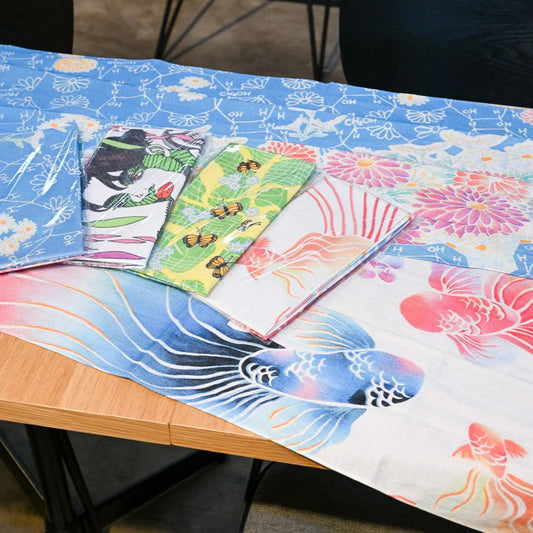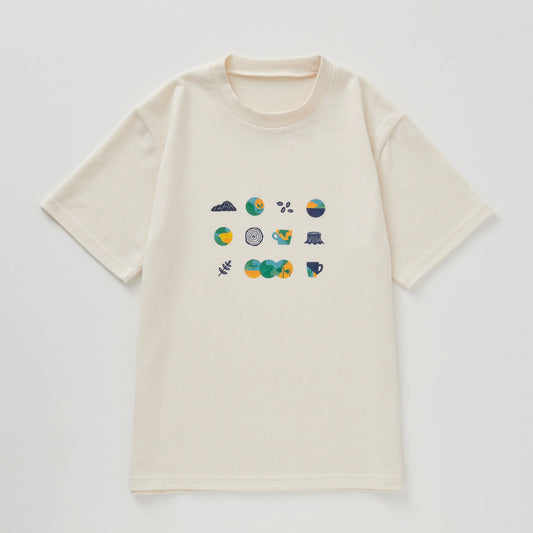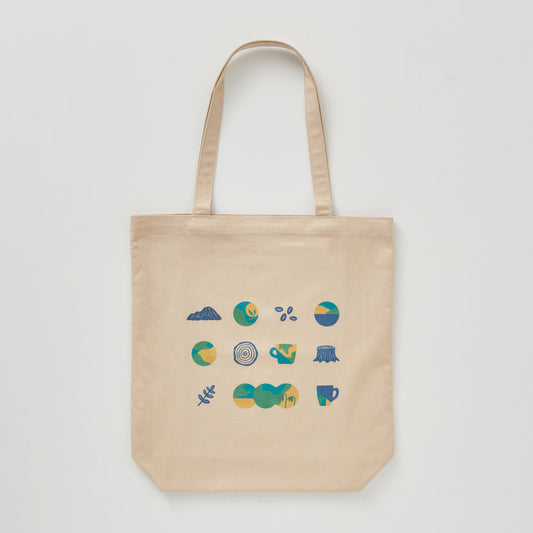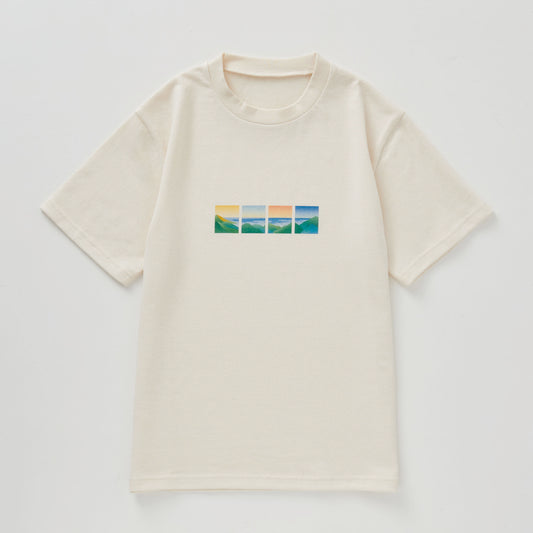■ A collaboration that weaves traditional Kyoto Yuzen gold leaf techniques and the global environment to the next generation
Gold leaf technology has its roots in ancient India, Java and China, and has developed uniquely in Japan as a technique for brilliantly decorating kimonos, ceramics and other items. In particular, during the Tang and Song dynasties, gold leaf was pressed onto textiles with adhesives such as paste, lacquer and hide glue, and then gold leaf was pressed onto the fabric, dried, and then wiped off to reveal the pattern. This technique was known as "sayakin" and was combined with tie-dyeing and embroidery in Japan to create a unique dyeing style that was gorgeous yet somehow delicate.
This gold leaf technique is widely used in Noh costumes and celebratory attire, and is used to express Yuzen dyeing in a gorgeous way, and is a traditional technique that has been handed down through the ages. Even in modern times, the techniques, materials, and tools have been improved while respecting its history, and it is still incorporated into traditional crafts such as Kyo-Yuzen.

・Collaboration works created across generations
This time, in order to pass on the traditional techniques of gold leaf and the global environment to the next generation, a collaboration has been realized between "TSUMUGI," a project promoted by "Nestlé Japan" and "Kobe City," which are participants in the general incorporated association Upcycling, to produce paper thread from used paper resources and unused thinning materials, and "Hirooka Kyosen Kogei," which specializes in gold leaf crafts.
Matsumoto-ryu gold leaf craftsman, Yomi Hirooka, has applied delicate gold leaf to the supple and soft-touch fabric woven with the paper thread "TSUMUGI." In addition, Shigetaka Mizushima, Hirooka's grandson, has created an art design that updates the traditional motifs of Kyo-Yuzen in a modern style.
In this way, the grandson has incorporated his grandfather's "kinsai craft" of Kyoto Yuzen with modern sensibilities into designs on upcycled fabrics, making this a collaboration that truly passes on traditional techniques and the global environment to the next generation.


■ Product Overview
The T-shirt is finished using the "Itome Kinkukuri" technique, which is one of the gold leaf techniques. This technique is also called "kinsen gaki" or "tsutsugaki" and involves tying the yuzen dyed pattern, especially the thread part, with gold wire from above.
It is a very delicate technique that uses a tube and gold wire (glue) instead of glue to draw patterns. By combining traditional Japanese techniques and updating them with a contemporary design, it is an item that expresses modern Japanese style and allows you to feel the gorgeousness and delicate beauty of Japan.

size
M: Length: 65cm, Bust: 94cm
L: Length: 67cm, Bust: 100cm
XL: Length: 70cm, Bust: 106cm
Sale price ¥16,500 (tax included)
Composition: 70% cotton, 30% unclassified fiber (Japanese paper)
Country of Origin: Japan
[ Design Concept]

"Bright Future -Young Leaves-"
The young leaf pattern symbolizes new life, growth and hope, and the upward growth of the young leaves represents new beginnings and fresh starts in the natural world. As young leaves also mark the changing of the seasons, they celebrate the beauty and harmony of the four seasons in Japan.
This design is popular for praying for new starts and good fortune and is often used on special occasions and celebratory occasions. It reflects the Japanese sense of beauty and respect for nature and is treasured as a symbol of hope and support.

" Rinpa flowers - Rinpa flowers - "
Rinpa floral patterns are widely loved as part of Kyo-Yuzen designs. The art style known as Rinpa, from which the name Rinpa comes, depicts beautiful flowers and plants inspired by the natural world.
The design is characterised by a unique artistic style, with floral motifs being its key element.




